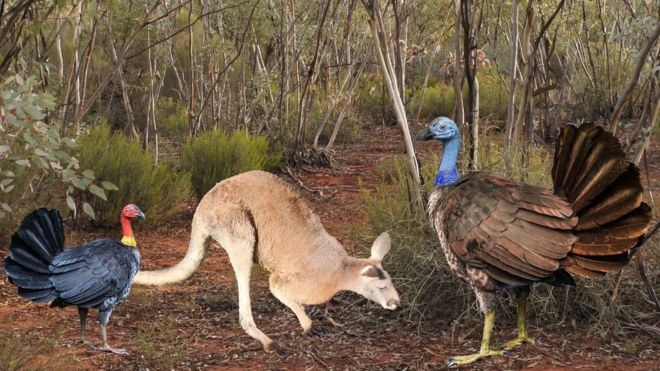 It has been described as a "giant flying turkey" the size of a grey kangaroo by Australian scientists.
It has been described as a "giant flying turkey" the size of a grey kangaroo by Australian scientists.
It is actually an extinct species of megapode bird - an ancient cousin of the modern Malleefowl, which famously builds mounds of earth and leaf litter in which to lay and incubate its eggs.
Progura gallinacea probably didn’t do that, however.
It lacked the Malleefowl’s large feet and specialised claws, the researchers tell a Royal Society journal.
Instead, it’s quite likely P. gallinacea simply buried its eggs in warm sand or soil, just as some living megapodes in Indonesia and the Pacific still do.
A team from Flinders University in Adelaide assessed new and old fossil finds in producing its report.
Some of the older specimens were first collected in the late 1800s; the newer ones came from the remarkable Thylacoleo caverns of Western Australia, where countless ancient animals fell to their deaths through limestone pipes.-read more
No comments:
Post a Comment